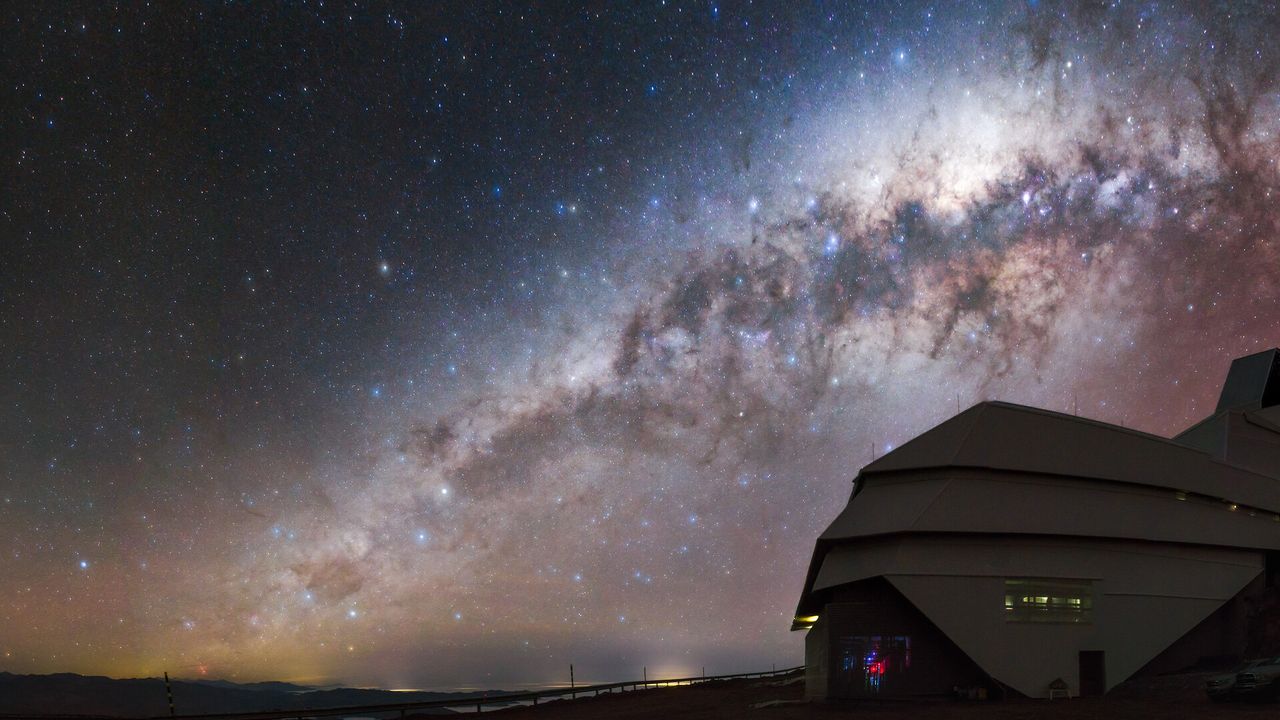Science
Rubin Observatory Unveils Cosmic Secrets with Real-Time Sky Scans

The Rubin Observatory is set to revolutionize our understanding of the cosmos by capturing the night sky in real-time. Located on Cerro Pachón in the Andes Mountains of Chile, the observatory is using cutting-edge technology to create a dynamic digital movie of the universe, scanning the sky every few nights. This initiative promises to enhance our understanding of the Milky Way and its myriad celestial phenomena.
For centuries, humans have gazed at the Milky Way, intrigued by its complexity and beauty. The bright band of stars has inspired countless explorations into its structure and composition. The National Science Foundation’s NOIRLab serves as a hub for ground-based optical and infrared astronomy, providing essential telescopes and data infrastructure that fuel discoveries related to stars, galaxies, dark matter, and more.
The Rubin Observatory, named after renowned astronomer Vera Rubin, distinguishes itself from traditional telescopes by employing the LSST camera, the largest digital camera ever constructed. This remarkable instrument can capture an area of the sky approximately 40 times the size of the full moon in a single exposure. As the LSST camera operates over the next decade, it is expected to generate tens of petabytes of data, which astronomers will analyze to address critical cosmic questions.
Exploring Cosmic Mysteries
The data produced by the Rubin Observatory will play a pivotal role in investigating some of the universe’s most pressing issues, including the mysteries of dark matter and dark energy. Additionally, the observatory will allow scientists to monitor potentially hazardous asteroids that could pose a threat to Earth. This ambitious project will not only benefit professional scientists but will also empower citizen scientists worldwide. The data will be made publicly available, inviting enthusiasts to engage with the cosmos in new and meaningful ways.
With the capability to produce vast amounts of information, the Rubin Observatory is poised to become a cornerstone in the field of astronomy. As it embarks on this journey to unveil the secrets of the universe, it opens the door for collaboration and discovery, enhancing our collective understanding of the cosmos.
For those interested in learning more about the Rubin Observatory and its groundbreaking work, additional information is accessible through various channels, highlighting the advancements in ground-based telescopes and their contributions to astronomy.
The official launch of the Rubin Observatory marks a significant milestone in the quest for cosmic knowledge, with its first data expected to be released to the public in the near future. As humanity continues to look up at the night sky, the insights gained from this observatory promise to deepen our connection to the universe and the intricate tapestry of stars that surrounds us.
-

 Science2 weeks ago
Science2 weeks agoInventor Achieves Breakthrough with 2 Billion FPS Laser Video
-

 Top Stories3 weeks ago
Top Stories3 weeks agoCharlie Sheen’s New Romance: ‘Glowing’ with Younger Partner
-

 Business3 weeks ago
Business3 weeks agoTyler Technologies Set to Reveal Q3 Earnings on October 22
-

 Entertainment3 weeks ago
Entertainment3 weeks agoDua Lipa Aces GCSE Spanish, Sparks Super Bowl Buzz with Fans
-

 Health3 weeks ago
Health3 weeks agoCommunity Unites for 7th Annual Into the Light Walk for Mental Health
-

 Health3 weeks ago
Health3 weeks agoCurium Group, PeptiDream, and PDRadiopharma Launch Key Cancer Trial
-

 World3 weeks ago
World3 weeks agoR&B Icon D’Angelo Dies at 51, Leaving Lasting Legacy
-

 Entertainment3 weeks ago
Entertainment3 weeks agoRed Sox’s Bregman to Become Free Agent; Tigers Commit to Skubal
-

 Entertainment3 weeks ago
Entertainment3 weeks agoMother Fights to Reunite with Children After Kidnapping in New Drama
-

 Health3 weeks ago
Health3 weeks agoNorth Carolina’s Biotech Boom: Billions in New Investments
-

 Science3 weeks ago
Science3 weeks agoNorth Carolina’s Biotech Boom: Billions Invested in Manufacturing
-

 Top Stories3 weeks ago
Top Stories3 weeks agoDisney+ Launches Chilling Classic ‘Something Wicked’ Just in Time for October









